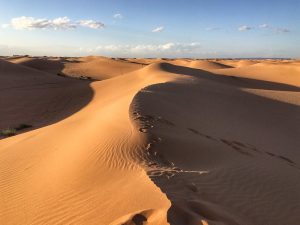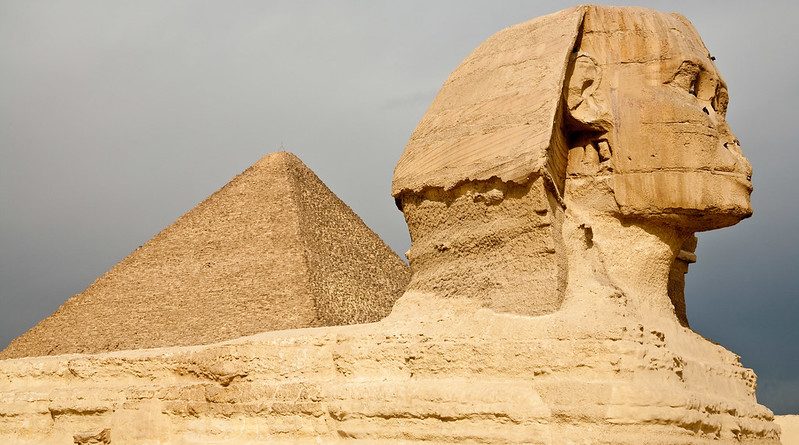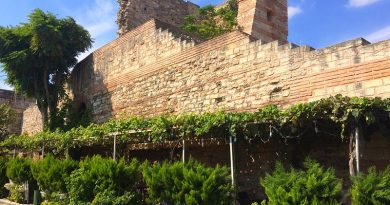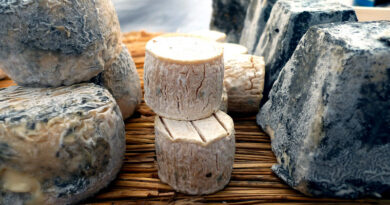Egypt: Destinations
Cairo
Cairo is one of the world’s largest cities, travellers will find everything from slums to ritzy hotels, KFC fast food outlets to atmospheric coffee houses where locals suck on shisha water pipes to while away the hours. The city is divided in two by the River Nile, and distinct neighbourhoods like Islamic Cairo and Old Cairo are fascinating places to wander and explore. Don’t miss the Egyptian Museum, home to the world’s largest collection of Egyptian relics and most famously of all, the artefacts buried with King Tutankamun. At night, catch a belly or Sufi dancing performance at a posh hotel. For shopping, head to the Khan Al Khalili Bazaar, a vast market in operation since the 1300’s, to browse through stalls selling gold jewellery, alabaster pyramids and just about everything in between. As the world’s largest Islamic country, the mosques in Cairo make interesting visits, especially the Mohammed Ali Mosque in the Citadel; the Al-Azhar which is also the oldest university in the world, and the Ibn Tulun whose climbable minarets offer magnificent views of the city.
Giza
Home to the most famous of Egypt’s sites, Giza is now a suburb of Cairo which is in easy reach downtown (and is even a stop on the subway line). Here you will be accosted with all kinds of tacky desert camel treks, evening sound and light shows and guided tours to the threePyramids and Sphinx, but its hard not to succumb to the charms of the place; after all you’re visiting one of the most recognizable landmarks that rank in the top three world tourist sites, aside from the Taj Mahal in India and the Cristo Redentor in Rio.
Alexandria and the Nile Delta
The Nile Delta extends above Cairo in a maze of canals and vibrant green fields. This is Egypt’s breadbasket where much of the population lives. To the west is Alexandria, the country’s second largest city, though it has been the location of many historical events, including the location of one of the world’s greatest libraries, the Pharos Lighthouse, the city doesn’t have much in the way of history to see now. The recent discovery of what is believed to have been Cleopatra’s Palace beneath the waves off the waterfront is changing the perception of Alexandria, and for the traveller with time on their hands, it offers an interesting place to stay for a few days.
 Siwa and The Western Desert Oases
Siwa and The Western Desert Oases
The entire western portion of Egypt is a vast desert that stretches to the Libyan border and makes up the most eastern part of the Sahara. It is one of the driest regions on the planet, although it hasn’t always been this way: millions of years ago the whole area was a vast wet tropical ecosystem that was steadily destroyed by climate change. Water still can be found underground, and this helps the desert communities like Siwa survive the extreme heat and punishing sandstorms. For adventurous travellers, the large oases of Kharga makes for an interesting side trip from Luxor, or Siwa and Farafra can be a more intrepid link between Cairo and Aswan. Travellers should be aware of the current travel situation between the oases, particularly in the far south between Kharga and Luxor; fundamentalist areas can be restricted or even off limits to travellers from time to time.
Hurghada and the Red Sea Coast
The Red Sea coast is as fascinating geologically as it is biologically; it is here that the earth’s tectonic plates are pulling apart the continents to form a new ocean. Though this will take millions of years, the sea here has very little incoming flow of fresh seawater from the Indian Ocean, making the calm, clear waters highly salty and perfect for coral reefs to form. All along its fringes are white sand beaches, such as those found at Hurghada, and reefs that burst with marine life like lionfish, grey reef sharks, barracuda and trevally. The further south you go the more pristine the reefs get, though facilities are sparse and separated by large distances.
Sharm al Sheik and the Sinai Peninsula
This is the epicentre of the Red Sea diving industry, propelled by the discoveries by Jacques Cousteau in the 50’s and 60’s. Here in Sharm Al Sheik, amid the 5 star luxury resorts and hotels that have sprung up here in recent decades, you can board some of the worlds most modern dive boats and dive in the fabled Ras Mohammad Marine Park and the Straits of Tiran which offer huge schools of pelagic fish and soft corals. The rugged Sinai Peninsula nearby offers fantastic camel, jeep trekking and camping opportunities, with Mt Sinai a popular climb.
Luxor
Straddling the Nile, Luxor is often referred to as a living museum because of its vast numbers of ancient Egyptian monuments found here. The City of Luxor on the East side of the Nile, the town of Karnak on the north of Luxor, and Thebes on the west side of the Nile make up the three major sites here that include the fabled Valley of the Kings, the Valley of the Queens, the Temple of Luxor, the Temple of Karnak and many others.
Aswan and Abu Simbel
In the far south of Egypt lies Aswan, Egypt’s sunniest southern city and the ancient frontier town located about 81 miles south of Luxor. With its Nubian influence the town has a strong African feel, and is a popular jumping off point for Abu Simbel. This temple was built to declare to travellers coming from southern African nations the greatness of the Egyptian civilization. Stone by stone the temple was moved to make way for Lake Nasser and though it now sits embedded in an artificial mountain, the experience is nothing less that spectacular.




